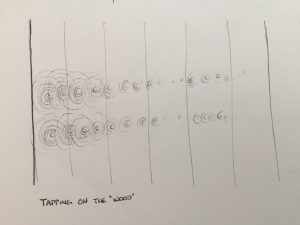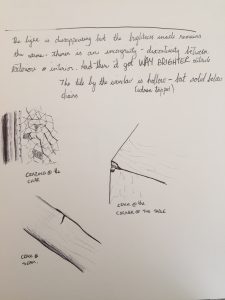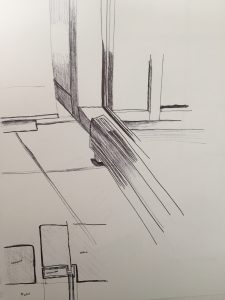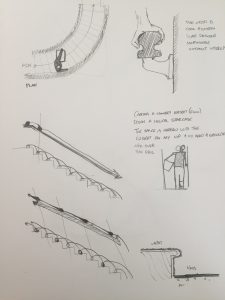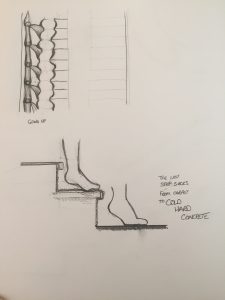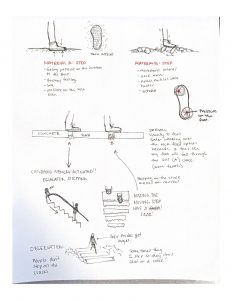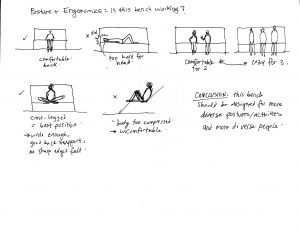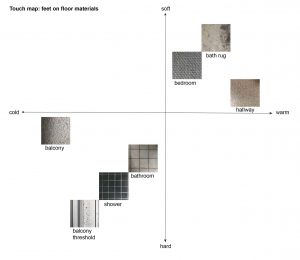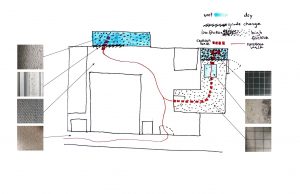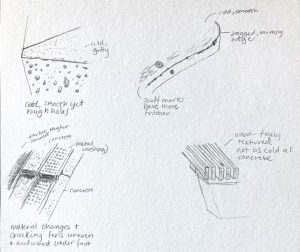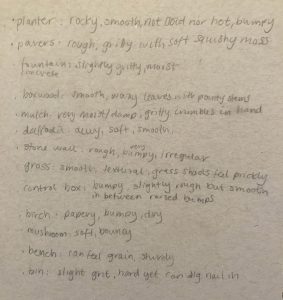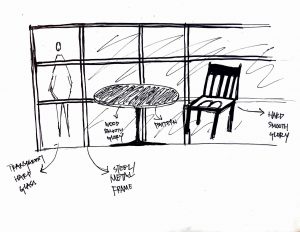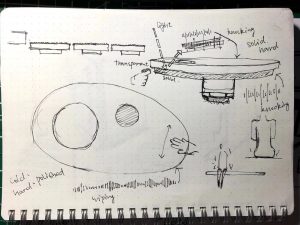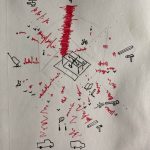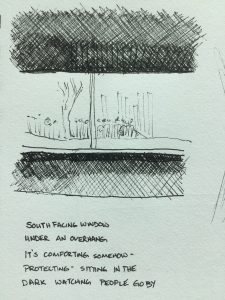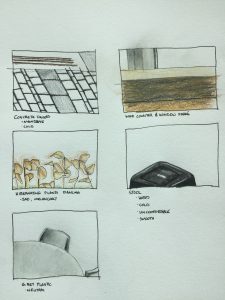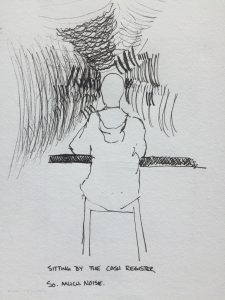I started by walking without sight, down a set of stairs in the orchard. The lines represent the experience of my hand, the experience of my foot, with annotations and connected to a axonometric mapping of the actual staircase.

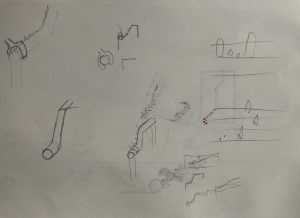
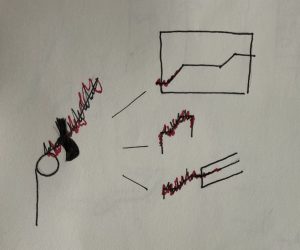
Next I set out to diagram the vibrations of the various handrails, where some feel really unstable and some felt really secure. Ultimately in connection to how well they are supported by walls.
Lastly for homework I wanted to explore the relationship between the door and stairwell in the landscape annex – the most awkward door I have ever encountered. I wanted to try a new style of sketching directly on top of digital photography. In this case it was only somewhat successful.



